Advanced Elements of Benicia, California recently introduced one of two new kayaks for the 2020 product year. The AE3027 StraitEdge2 Pro is a redesign and upgrade to the long-standing, AE1014 Advanced Elements Straitedge2 inflatable kayak for one or two paddlers.
The new AE3027 Straitedge2 Pro features the identical kayak materials and construction as the earlier AE1014, but with upgraded accessories and features. The Straitedge2 Pro now comes with a 4-6 PSI drop stitch floor, rather than the standard 1 PSI PVC floor. The increased floor rigidity enhances the paddling experience with better tracking and glide.
The Straitedge2 Pro arrived this past month so we took the opportunity – during a brief break in the heat spell – to put it through its paces. Here are details on the Advanced Elements Straitedge2 Pro AE3027, a 13 foot inflatable kayak for one or two paddlers weighing in at roughly 42 lbs.
Getting Started with the Straitedge2 Pro
The box as received weighs 59 lbs, measuring 39 x 21 x 13 inches.
A rugged, oversized, backpack-style carrying case (4.5 lbs) houses the kayak body with integrated floor (34 lbs), high-backed lumbar seats (2.5 lbs each), 2 sets of foot pegs, 2 rod holders, repair kit, fin and instructions. The kayak in the backpack with seats and parts weighs in at 45 lbs total.
Straitedge2 Pro Setup/Inflatation
We began by reading the manual, which gives excellent explanations on inflation, seating, peg installation. And here we come to AirKayak’s Tip #1: No matter how excited you are, take a good look at how the kayak is folded before you set the kayak up, so that you can get it back into the carrying case.
First step, unpack and unfold the kayak. (Please note: We will repeat some of the details previously mentioned in other writeups.)
Inside the bag are four identical plastic pegs, each with a foot pad, a lever and a number of holes – these are the foot pegs. By pressing on the lever, the foot pad can be moved forward and backward, locking into one of the openings.
Open the kayak body fully and you will see a series of 6 cloth pockets and tubes on each inner side – these are for the three seating positions. The first and third set are for tandem paddling while the second (middle) set is for solo paddling.
Point the peg with foot pad facing the paddler, and lever facing the bow. Insert the paddler-side end into the first loop, pushing back enough to then push the bow-end of the peg into the pocket. As these are tight, it is easiest to position it in the opening and then push on the foot pad to get it to slide all the way in.
Continue with the opposite
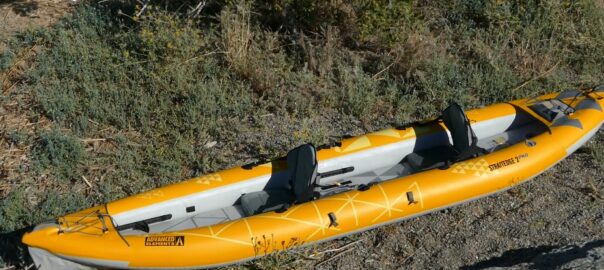
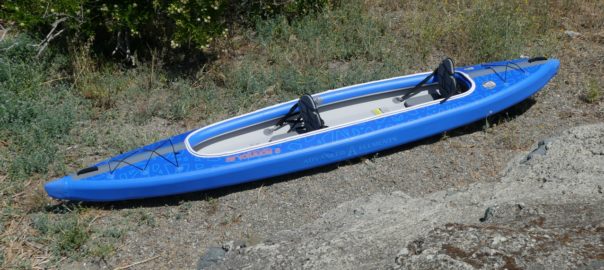
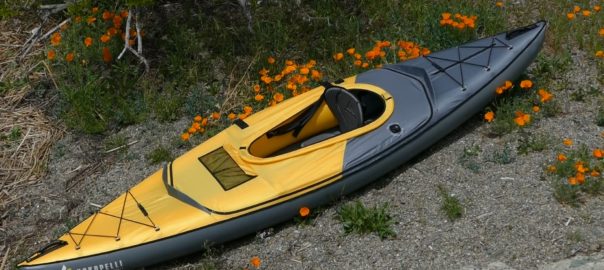


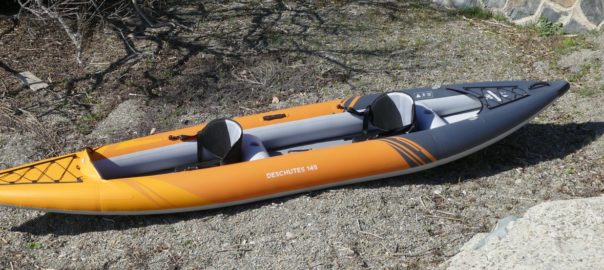
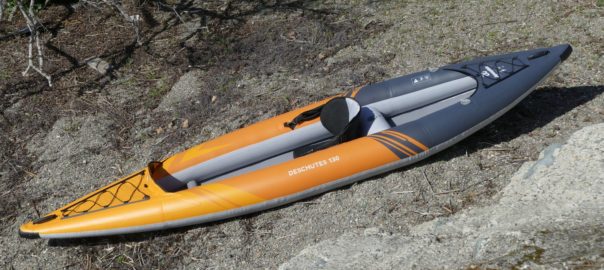
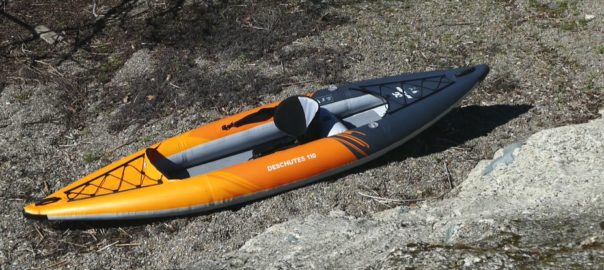
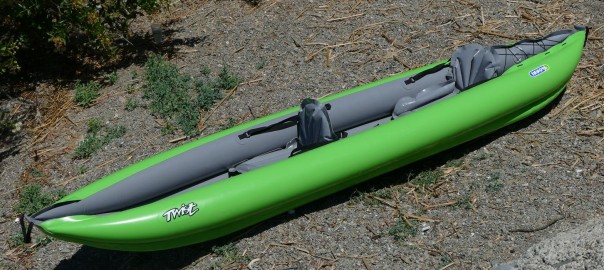

You must be logged in to post a comment.